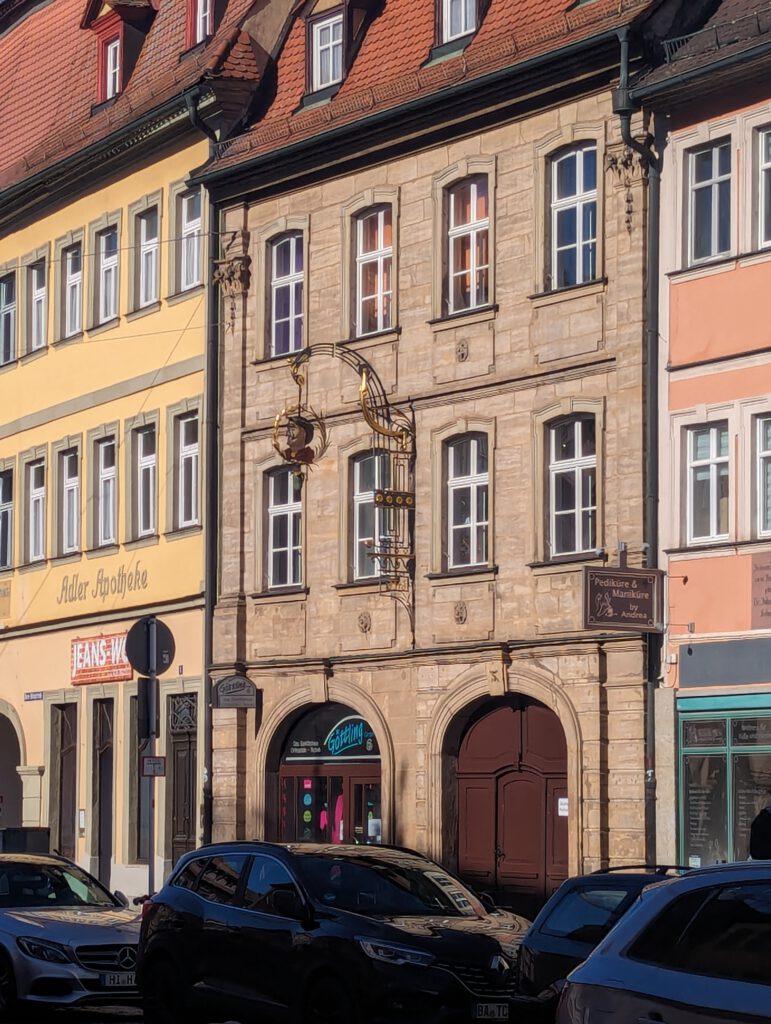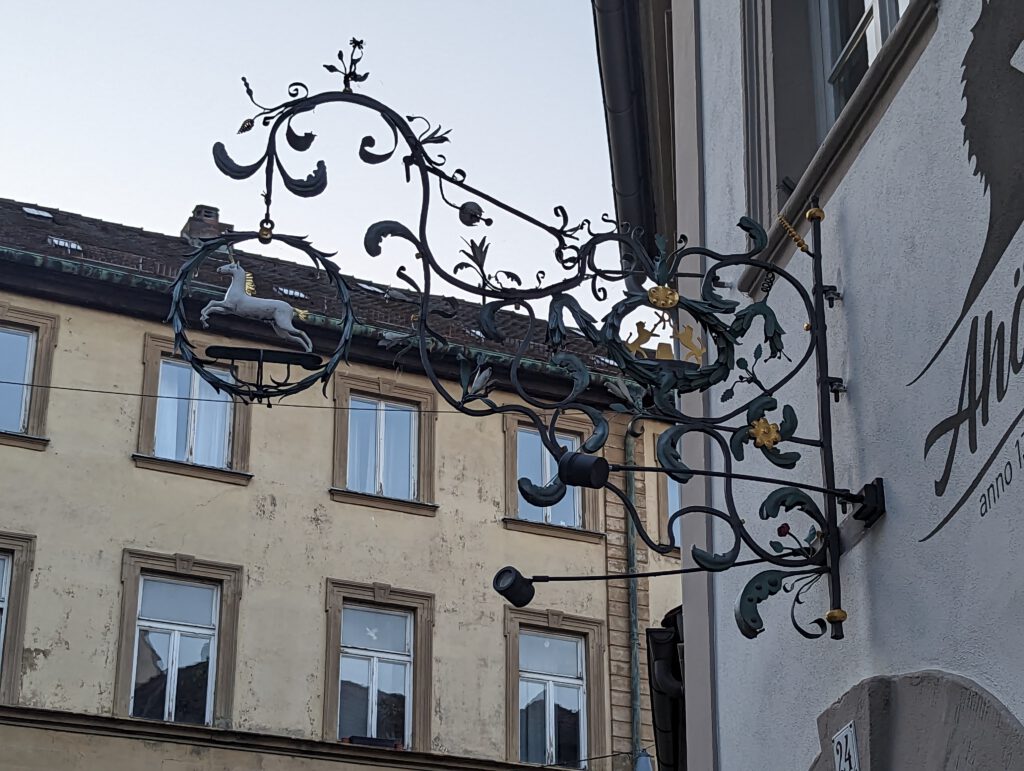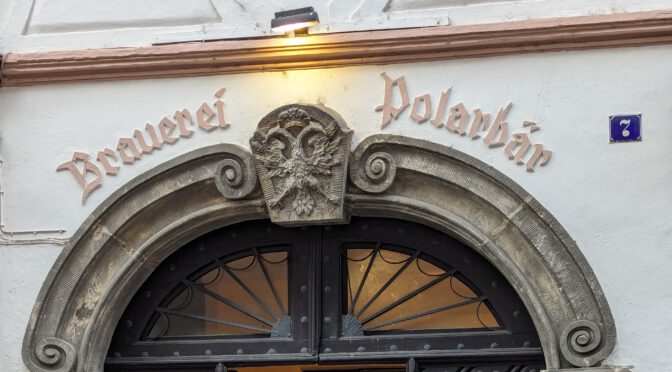Sometimes, the best historic finds are the ones that happen by pure coincidence. While researching a different topic (related to my next book that I’m currently working on), I came across a very basic analysis of various Bamberg Schenkbiere from January 1843. The same article also lists beers from other places (Würzburg, Kitzing, Schweinfurt on the next page), but I’m focusing on Bamberg in this post.
Schenkbier was a type of beer in Bavaria that was brewed during the brewing season which went from Michaelmas (29 September) until St. George’s Day (23 April). During this time, two main beer types were brewed, one was Sommerbier or Lagerbier, which was fermented and then stored underground in a cool environment to be served from next May, and Schenkbier or Winterbier, which was usually weaker (less malt, less hops) and only matured briefly as it was meant to be consumed during the brewing season after last season’s Lagerbier had run out and before the next season’s Lagerbier became available.
The analysis only contains 3 data points for each brewery: alcohol content by weight, real residual extract by weight, and carbon dioxide content by weight. But this is sufficient to infer more:
| Brewery | ABW [%] | Real residual extract [%] | CO2 [%] |
| Großkopf | 3.9 | 4.445 | 0.300 |
| Eichhorn | 3.8 | 5.250 | 0.300 |
| Blümlein | 3.7 | 3.778 | 0.320 |
| Weißes Roß | 3.6 | 5.412 | 0.300 |
| Weißes Bräuhaus | 3.0 | 5.556 | 0.360 |
| Fäßchen | 2.8 | 4.572 | 0.300 |
| Heller | 2.3 | 7.065 | 0.300 |
| Mohrenpeter | 2.1 | 4.779 | 0.230 |
| Polobär | 1.1 | 4.532 | 0.262 |
| Average | 2.92 | 5.043 | 0.298 |
Let’s first talk about carbonation: 0.3% CO2 are equivalent to 3 g/l or 1.5 volumes. This is absolutely within the expected carbonation level of beer at the time, and very much in line with “unbunged” beer (i.e. the beer is only carbonated through CO2 that naturally goes into solution at normal pressure and cool cellar temperature, with no extra pressure, e.g. through a bung in the maturation cask, applied). See also my blog post about German sparklers where I talk a bit more about historic analyses of the carbonation levels of bunged and unbunged beers.
One question that is not directly answered by the data is, what were the original gravities of these beers? How strong were they, besides the alcohol content? Fortunately, we can use an equation known as the “great Balling formula” that puts the original gravity (in °P), the final gravity (expressed in real residual extract as % of the beer’s total weight) and the alcohol content (in % alcohol by weight) into relationship:
OG [°P] = 100 * (2.0665 * ABW [%] + FG [%]) / (1.0665 * ABW [%] + 100)
Using this equation, and assuming the analytical results were precise enough to be usable, we can calculate the respective original gravities for each of the beers. I also converted the alcohol content to alcohol by volume, the more common unit of alcohol content these days:
| Brewery | ABV [%] | OG [%] |
| Großkopf | 4.90 | 12.00 |
| Eichhorn | 4.78 | 12.59 |
| Blümlein | 4.65 | 10.99 |
| Weißes Roß | 4.52 | 12.37 |
| Weißes Bräuhaus | 3.77 | 11.39 |
| Fäßchen | 3.52 | 10.05 |
| Heller | 2.89 | 11.53 |
| Mohrenpeter | 2.64 | 8.91 |
| Polobär | 1.38 | 6.72 |
What’s surprising is how different the beers were in terms of original gravity and attenuation. OGs between 11 and 12.6 °P are absolutely solid, and while some of these beers didn’t have nearly as much alcohol as modern lager beers, they’d still be alright to drink, although probably on sweeter side for modern tastes. Especially the beer from Heller stands out, with a respectable 11.5 °P but only 2.9% ABV and a very high residual extract. Doing the calculation, the real attenuation was less than 40%, so this beer must have been a sweet mess. Compare this with modern lager beer, with real attenuation around 65%.
The two breweries that stand out (and not in a good way) are Mohrenpeter and Polobär, both lower in alcohol and OG. Especially Polobär is really bad, with just 1.38% ABV and real attenuation of less than 33%. Not enough alcohol to even get tipsy, while the beer was probably quite sweet, too.
If you want to know where any of these breweries were located, take a look at my map of historic Bamberg breweries. I previously blogged about my effort of reconstructing the locations of Bamberg breweries based on historic sources and maps.
Of all the breweries listed in the analysis, only two are still around: Fäßchen, better known as Fässla these days, and Heller, best known for its Schlenkerla brand and brewery restaurant in the centre of the Bamberg old town.
![Sign hewn into stone outside Fässla brewery, saying "inn and brewery zum Fäßchen, owner Seb[astian] Kalb"](https://dafteejit.com/wp-content/uploads/2025/10/MVIMG_20190723_171402-1-745x1024.jpg)
The historic brewery sign of Großkopf still exists, and is very easy to spot if you’re outside Fässla or Spezial, as it was only a few doors down the road.

Polobär, or Polarbär as it was more commonly spelled, was what I like to call the fourth Bamberg smoked beer brewery. When the brewery ended production around WW2, only 3 others were left: Greifenklau (which gave up making their own smoked malt in the 1970s), Spezial and Schlenkerla. The Polarbär entrance is still around, while the building itself is now used by a Spanish restaurant.
Weißes Bräuhaus (also called “zum Weißbierbrauer”) and Blümlein were neighbours of Polarbär. Weißes Roß probably refers to Zum Rößlein, just a few doors down from Großkopf. I’m also not sure about Eichhorn, as none of my records list a brewery of that name in Bamberg. It may be a spelling mistake and refer to either Einhorn im Sand (on Sandgasse, recently revived as Ahörnla, the pronunciation of Einhorn [unicorn] in the local dialect) or Einhorn im Steinweg, located opposite of Großkopf.
Edit: I’m apparently too stupid to properly read. Zum Eichhorn was located on Lange Straße.
Mohrenpeter was historically the eastern-most brewery on Steinweg (modern-day Obere Königstraße), quite a bit away from Spezial, Fässla and Großkopf.


